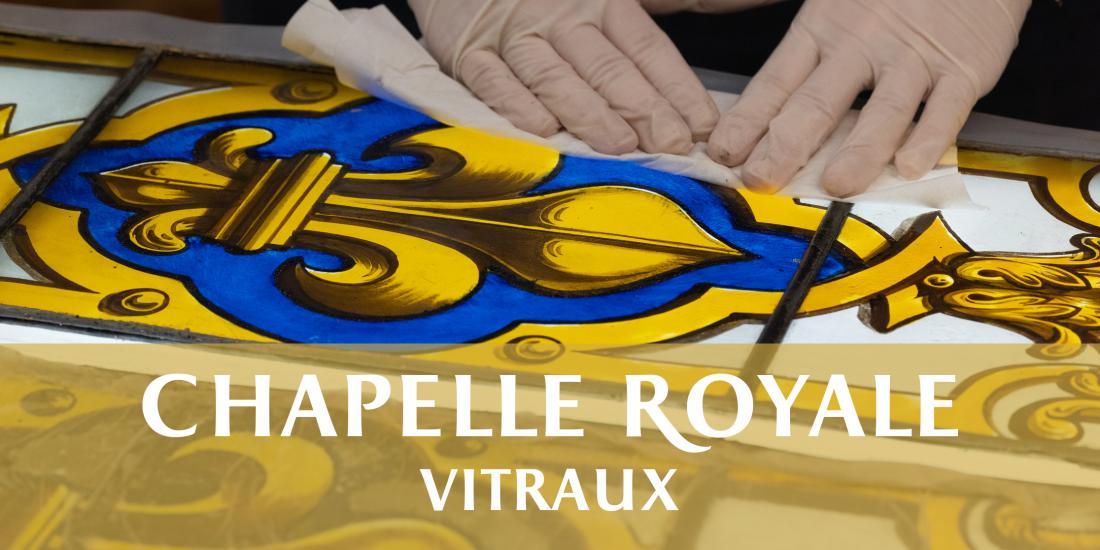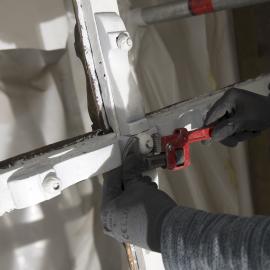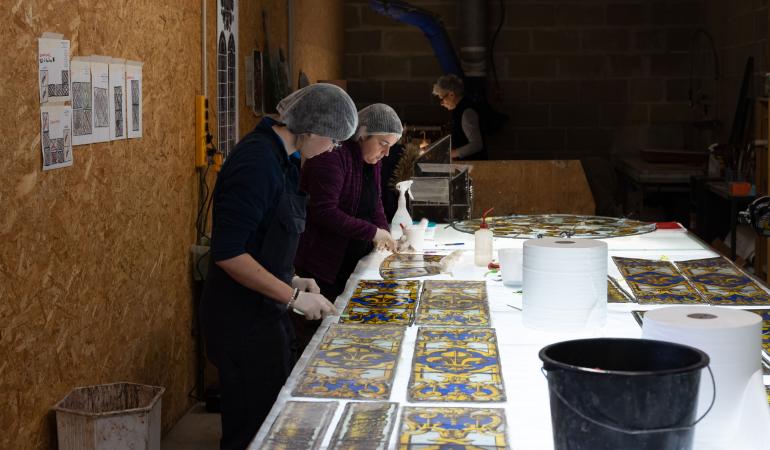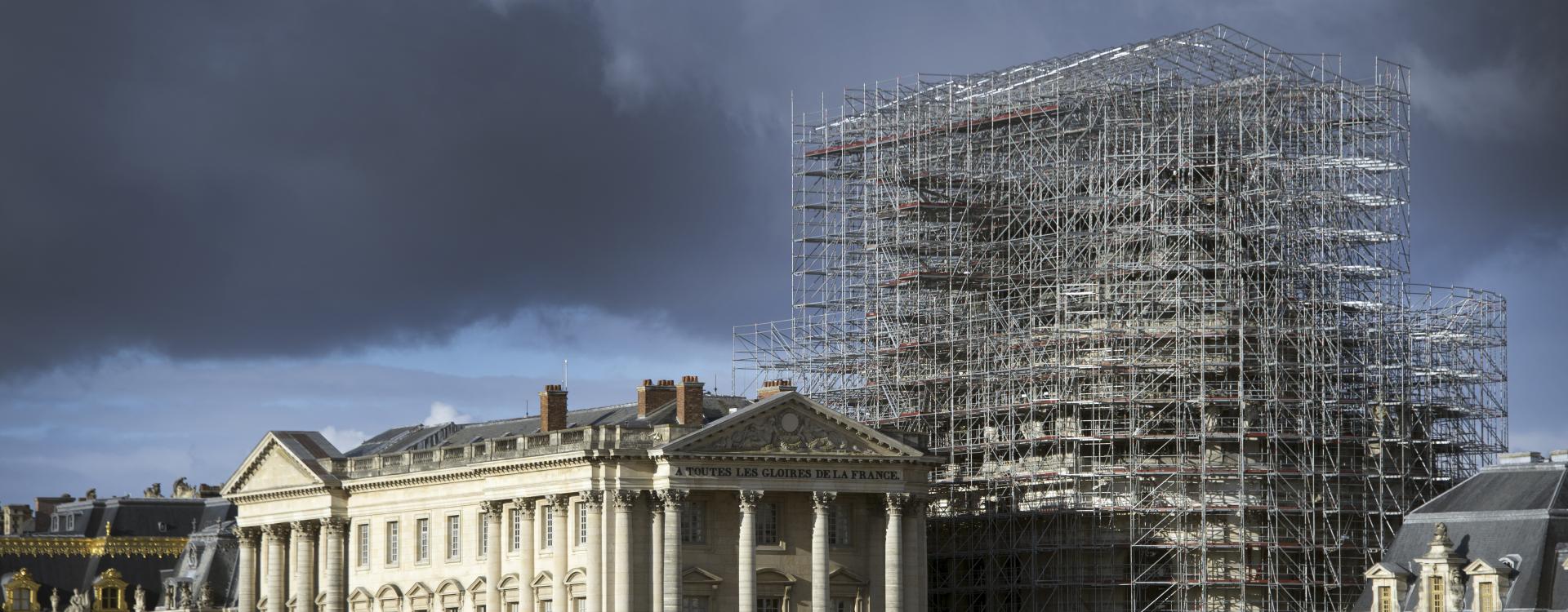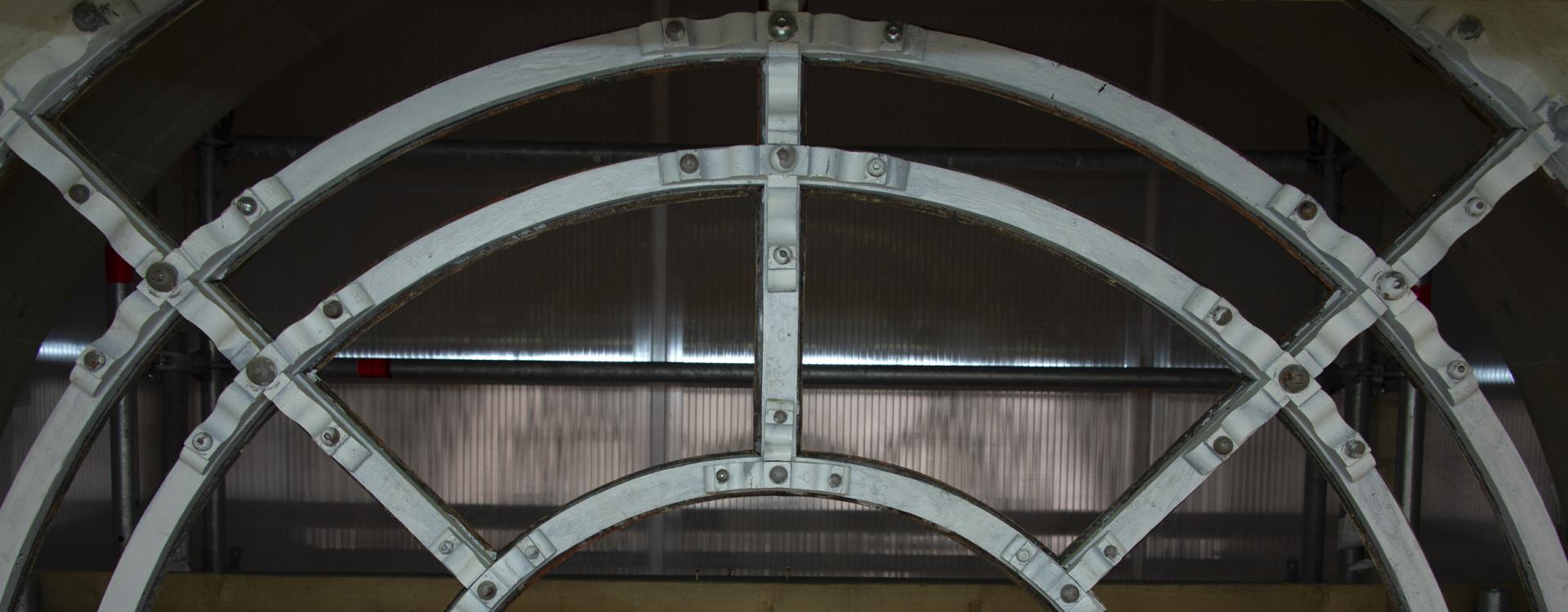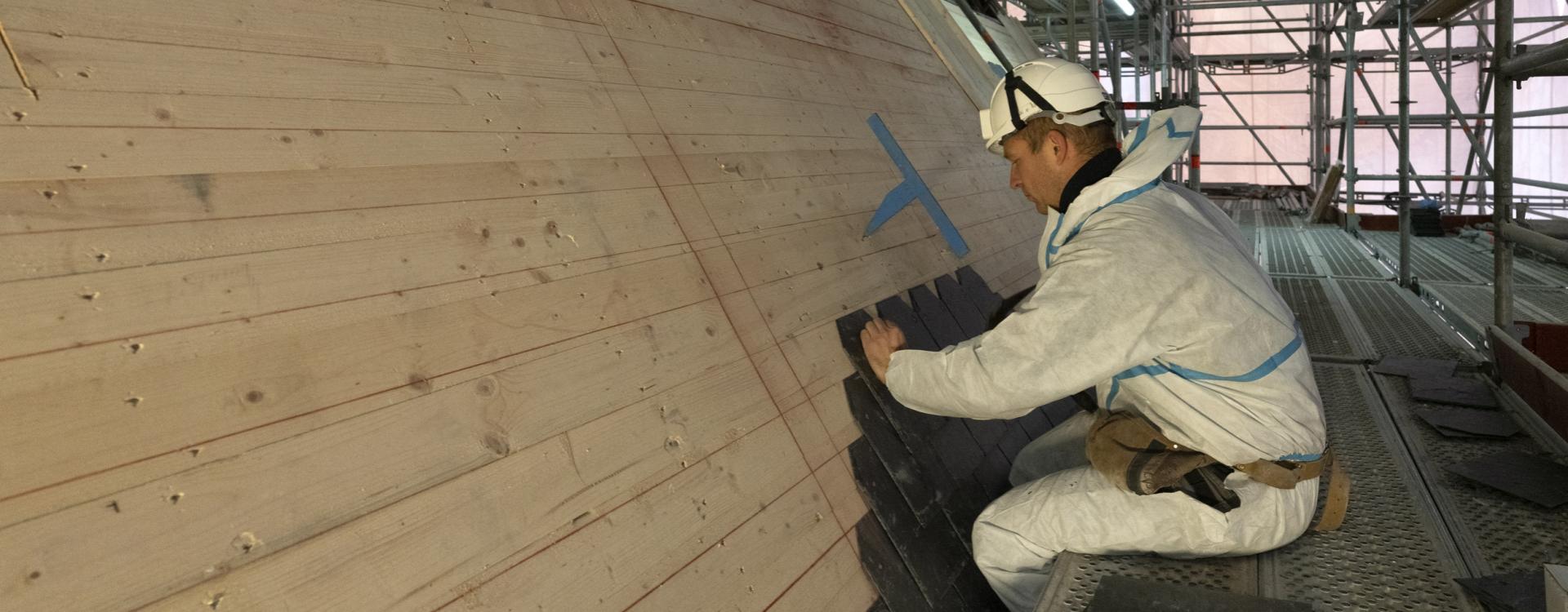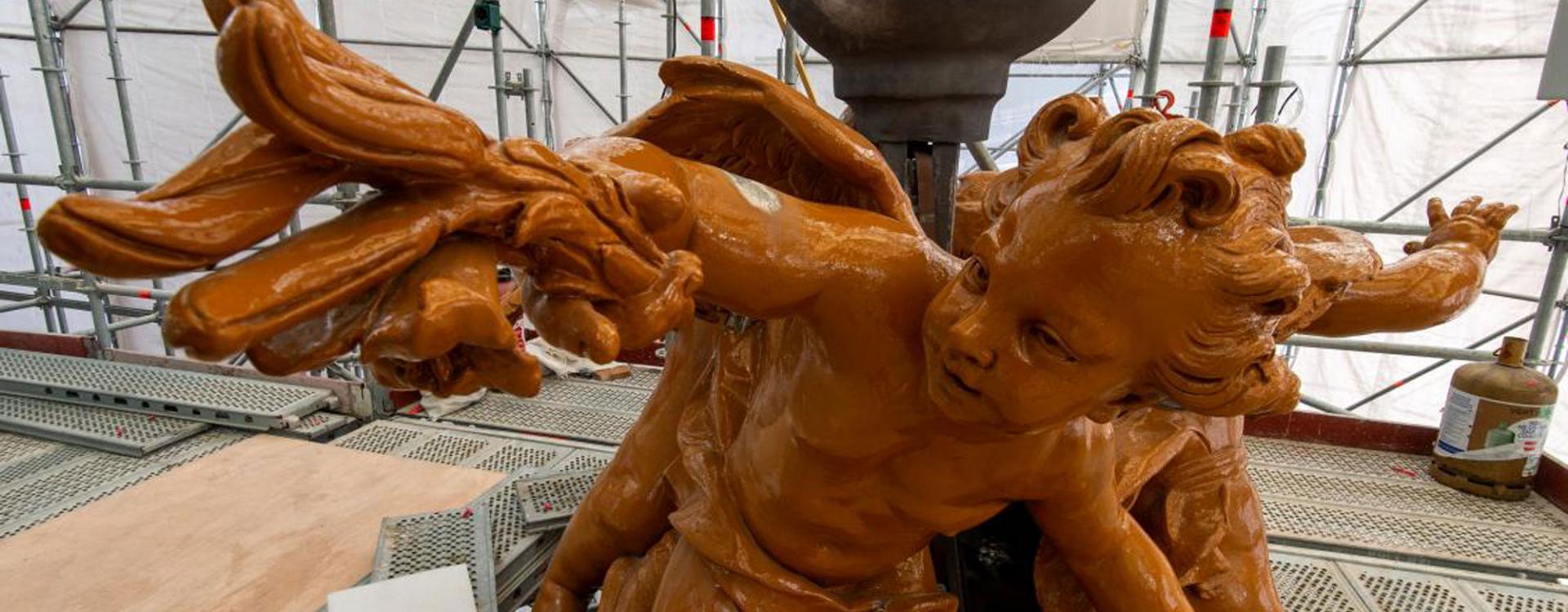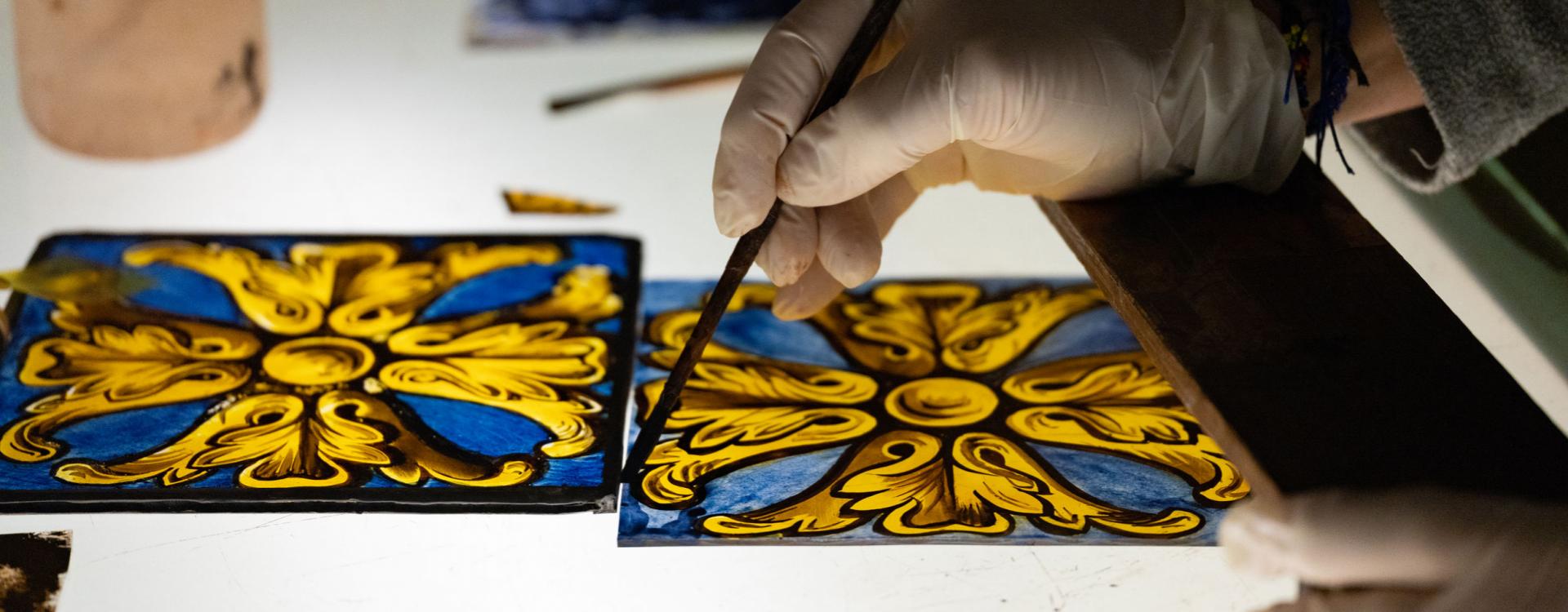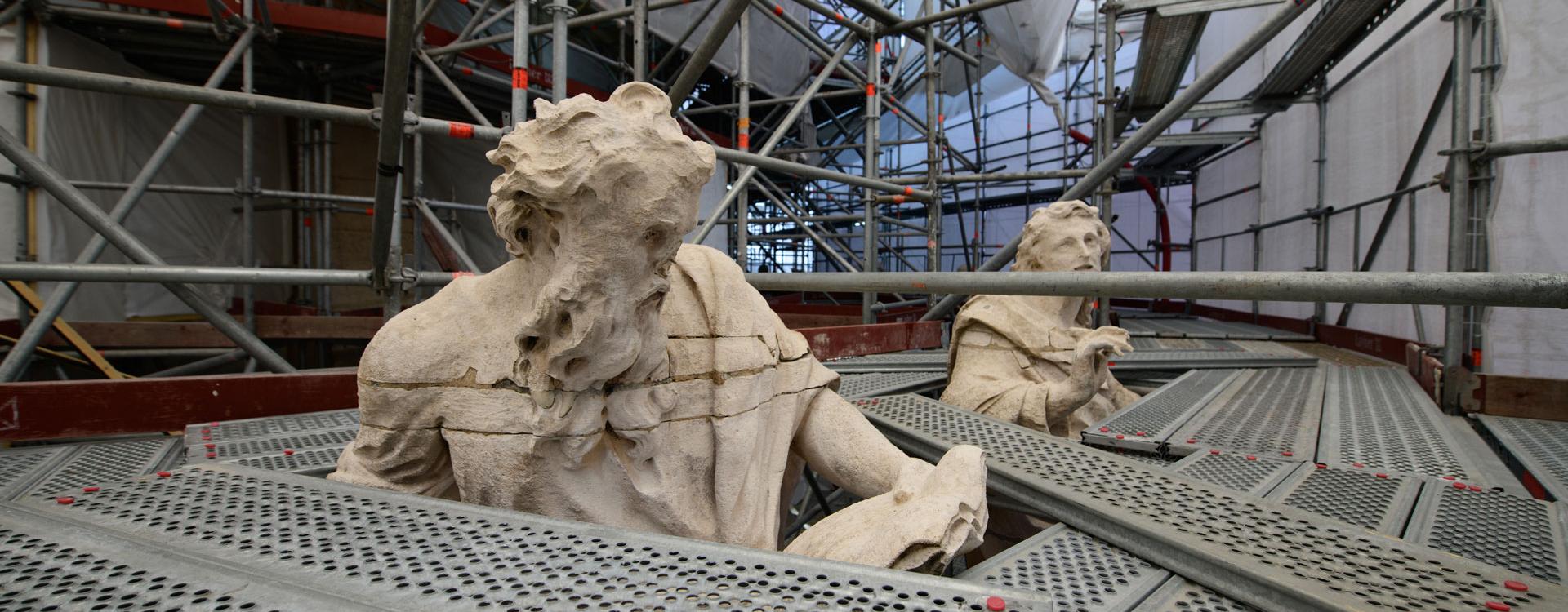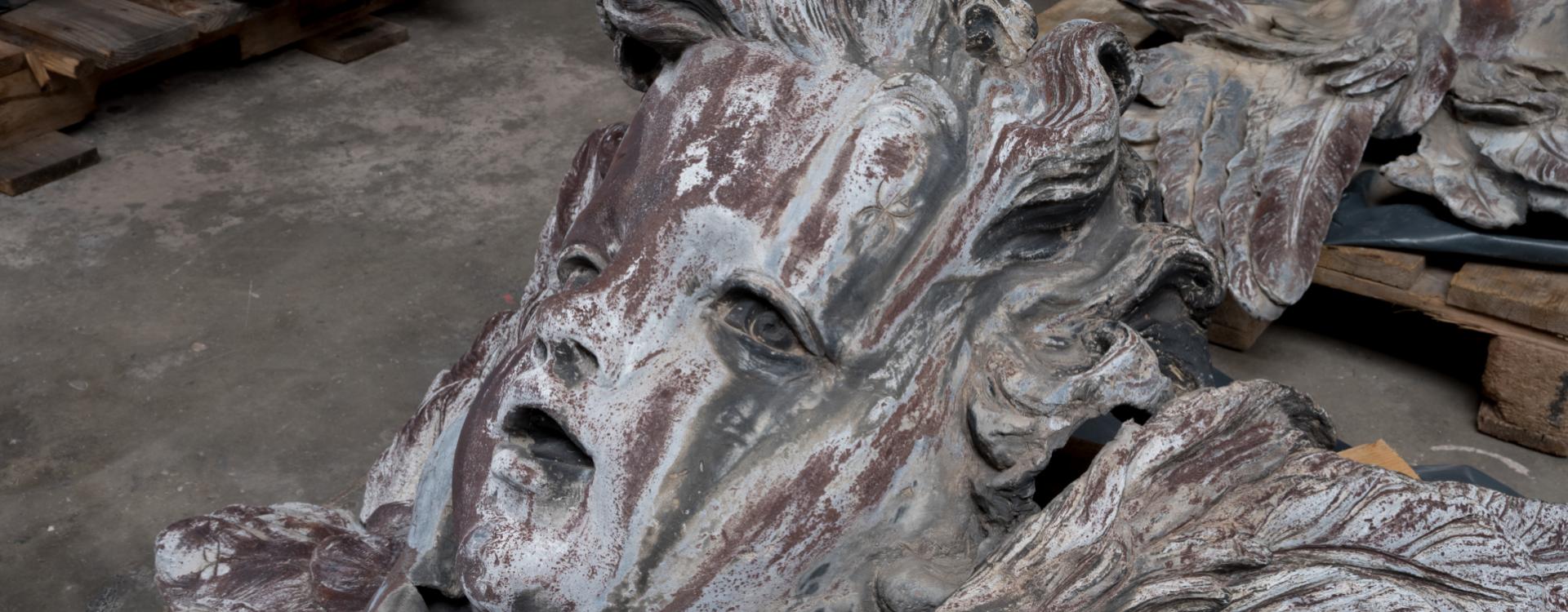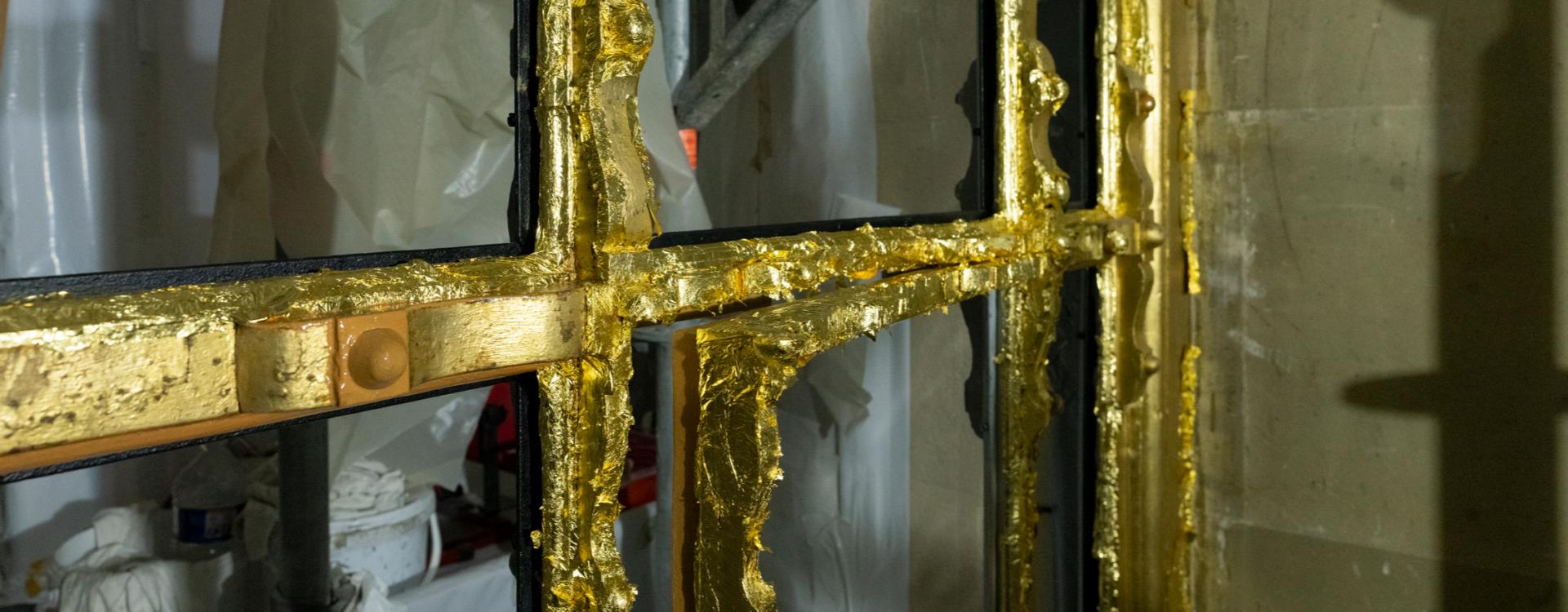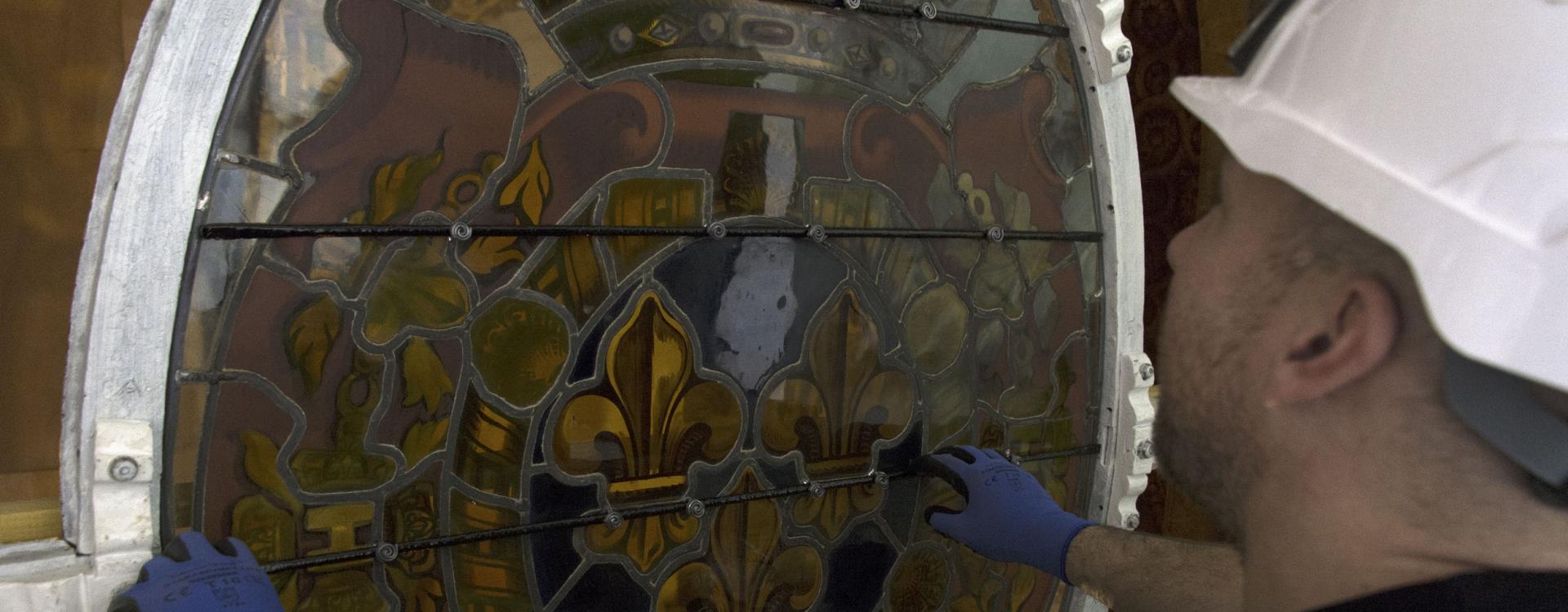Letting the Royal Chapel light up once again
The process to restore all of the stained glass is divided into three stages: removal, restoration and returning it to its place. Many months of planning and a great deal of care went into the removal of the Royal Chapel’s stained glass. One by one, the pieces of glass were separated from their beading (metal strips holding the glass in place) before being numbered, inventoried and photographed. Every precaution was taken to record the minutest detail regarding their original position.
The task was made even more complex by the fact that the stained-glass artists had to be trained to work in asbestos enclosures while removing the glass, as the hazardous substance had been detected earlier in the putty seals. The asbestos-containing material is most likely to have been incorporated during a previous maintenance operation in the 1960s.
Operations then move on to Sarthe and the workshop of Vitrail France. The glass is restored and conserved, i.e. the procedure followed is designed to preserve, as much as possible, the existing state. Similarly, all sealing and grafting must be reversible, so that it can be redone during subsequent restorations.
There are four main stages involved in restoring the stained glass: cleaning, sealing, grafting and reassembly. First, the stained-glass artists carefully clean the glass to restore its original colours. The difficulty here lies in restoring the brightness and reflective quality of the glass without damaging the paint. It is therefore imperative that only cotton be used to clean it. Where the glass is cracked or broken, the restorers stick it back together, using either silicone or a strip of copper and a tin solder. The latter is called the “Tiffany technique”. The aim of this stage is to consolidate everything, ensuring that the joints are as secure and unobtrusive as possible.
If certain parts are missing or too badly damaged to be restored, they have to be recreated. This is known as “grafting”. The duration and intensity of the firing adhere to a clever formula that enables the original colours to be recreated. The glass is then painted to match the position of the missing piece. Once it has been cleaned, sealed, grafted and reassembled, the stained glass is returned to the Palace of Versailles to be put back in place, thus restoring the same bright luminosity to the Royal Chapel as it had when it was first built.




